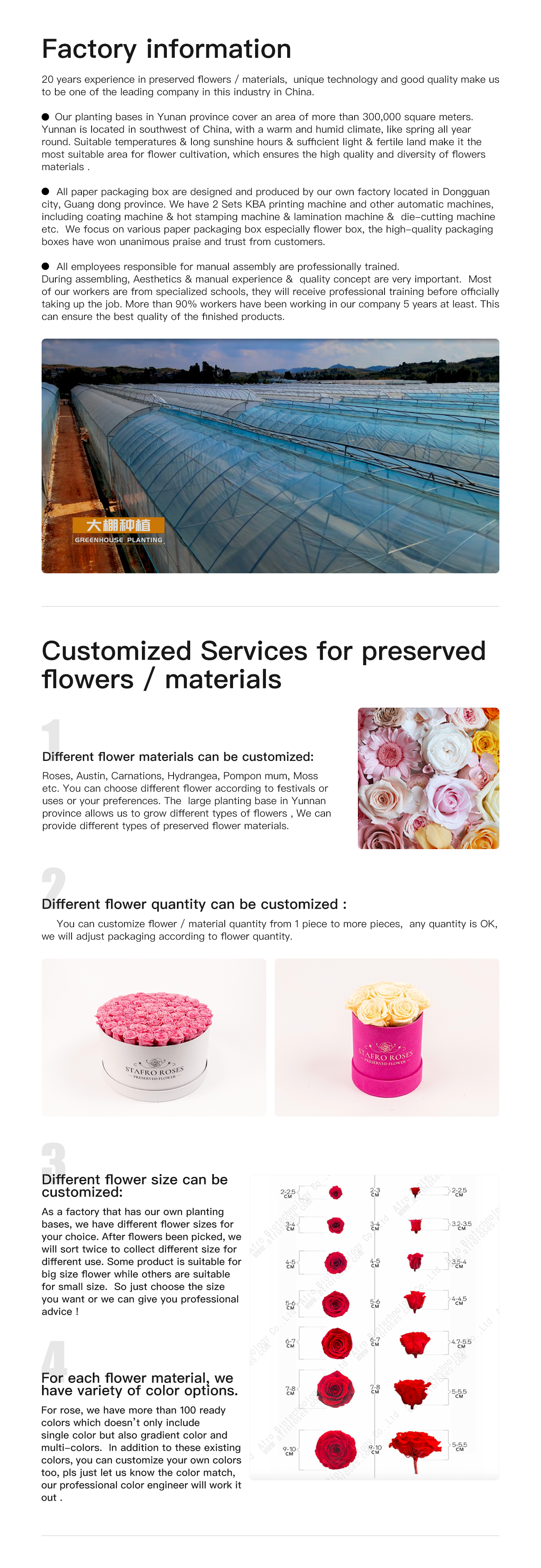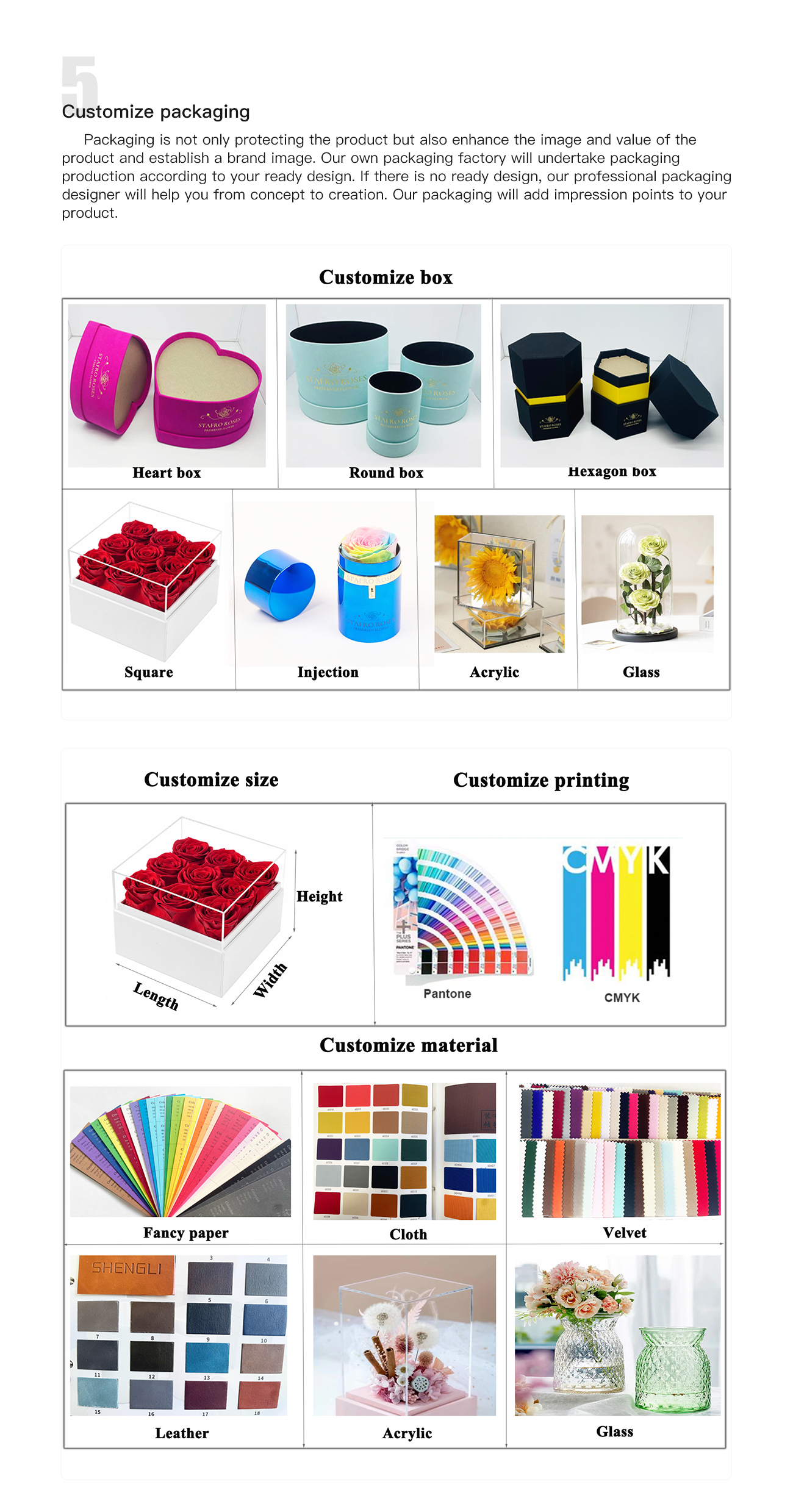
Products


preserved flower
Preserved flowers present a distinctive and environmentally friendly substitute for fresh blossoms, delivering a multitude of benefits. These flowers undergo a thorough preservation process that enables them to retain their natural allure and freshness for an extended duration, often spanning several years. The preservation method involves substituting the natural sap and water within the flowers with a specialized solution, effectively arresting the natural wilting process and safeguarding their beauty.
A primary advantage of preserved flowers lies in their durability. When properly maintained, preserved flowers can uphold their appearance and texture for an extended period, making them an ideal choice for long-term decorative purposes. This longevity diminishes the necessity for frequent replacements and reduces waste, aligning with sustainable practices in the floral industry.
Preserved flowers also offer versatility, boasting a diverse array of options, including roses, hydrangeas, and other popular blooms. This diversity facilitates a broad spectrum of decorative possibilities, ranging from floral arrangements to artistic exhibits. Furthermore, preserved flowers are low maintenance, as they do not necessitate water, sunlight, or specific temperature conditions to retain their appearance, rendering them a convenient and uncomplicated choice for interior decor and gifting.
From an environmental perspective, the utilization of preserved flowers promotes eco-friendly practices within the floral industry. By curbing the demand for fresh cut flowers and minimizing waste, preserved flowers contribute to environmental conservation endeavors. The preservation process for flowers incorporates eco-friendly techniques and materials, further enhancing their appeal as a sustainable floral option.
Preserved flowers also carry symbolic significance akin to fresh blooms, rendering them a meaningful choice for expressing emotions, commemorating special occasions, and conveying sentiments of love and appreciation. Their enduring nature allows for enduring artistic expressions and designs, rendering them popular in creative projects such as crafting, floral art, and decorative installations.
In conclusion, preserved flowers offer an array of advantages, encompassing longevity, versatility, low maintenance, sustainability, artistic applications, and symbolic significance. These attributes render preserved flowers an appealing choice for both decorative and artistic purposes, as well as for environmentally conscious consumers.


























